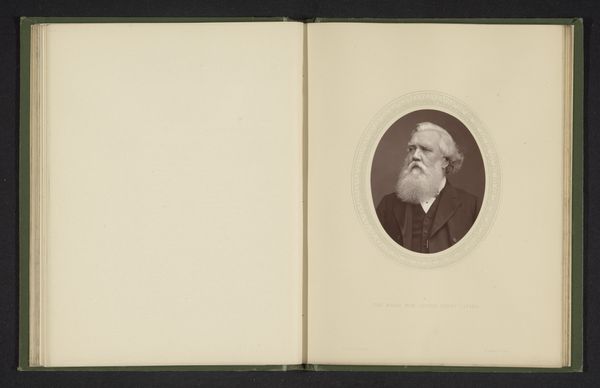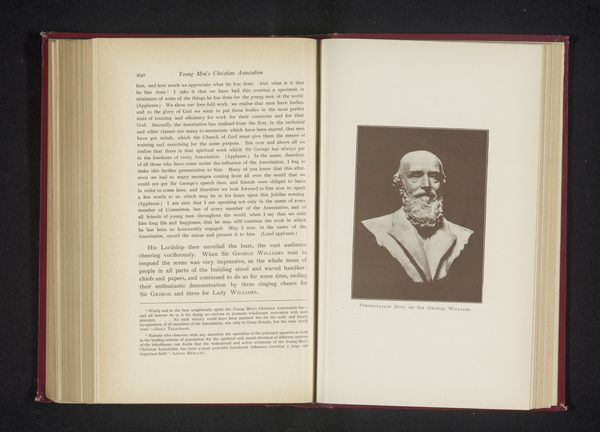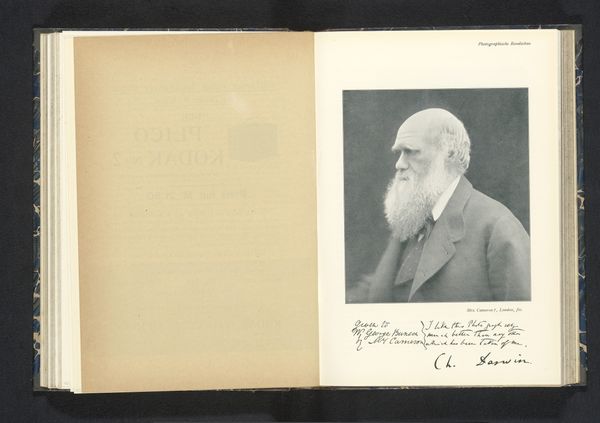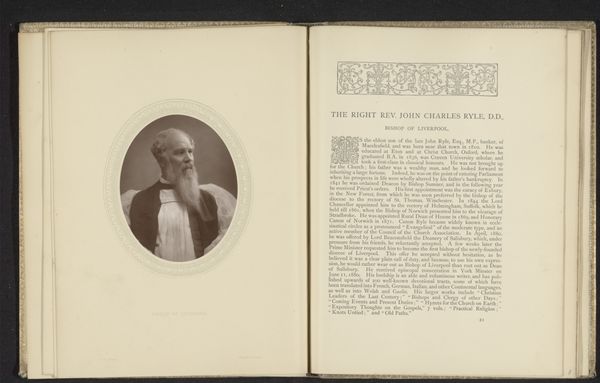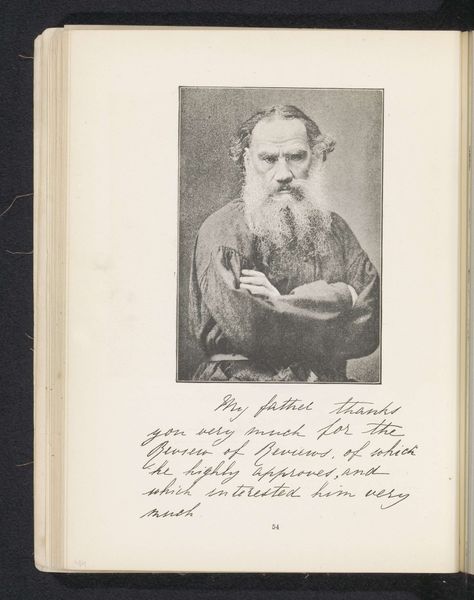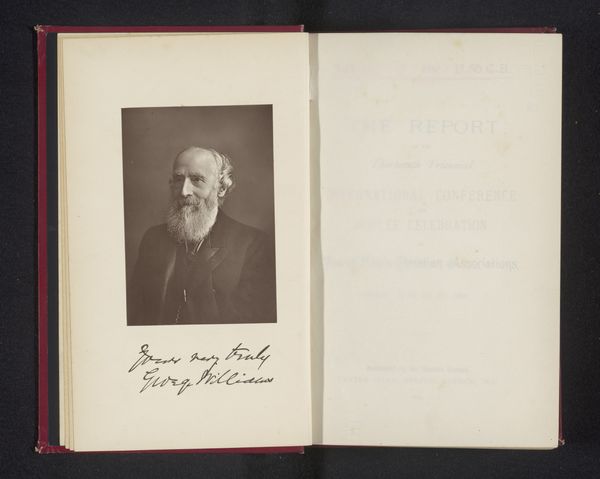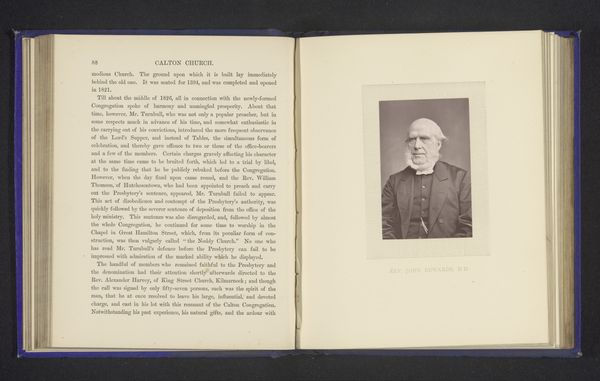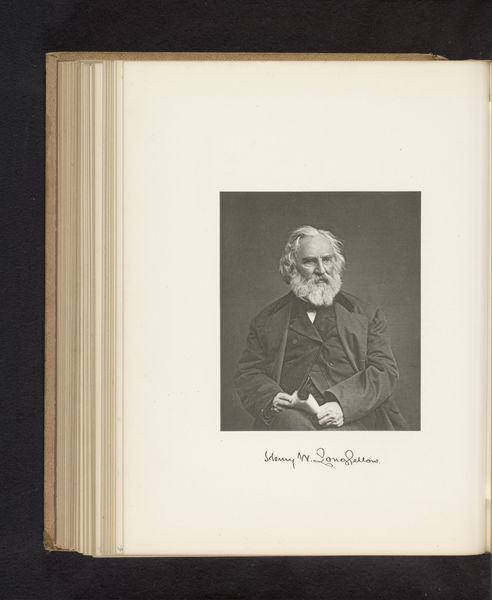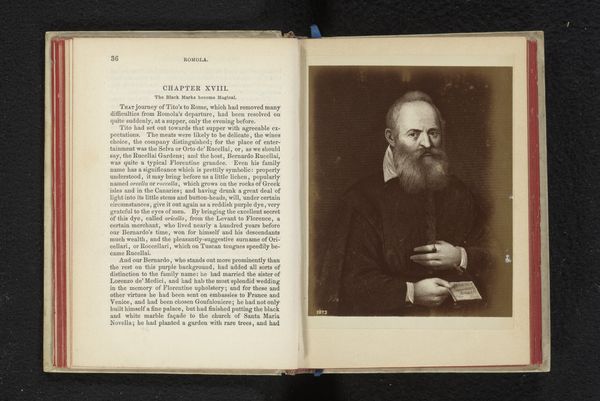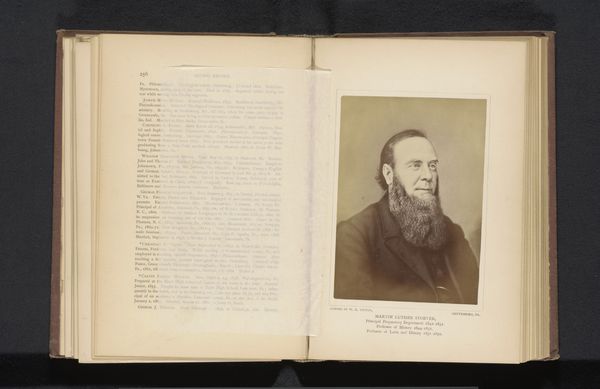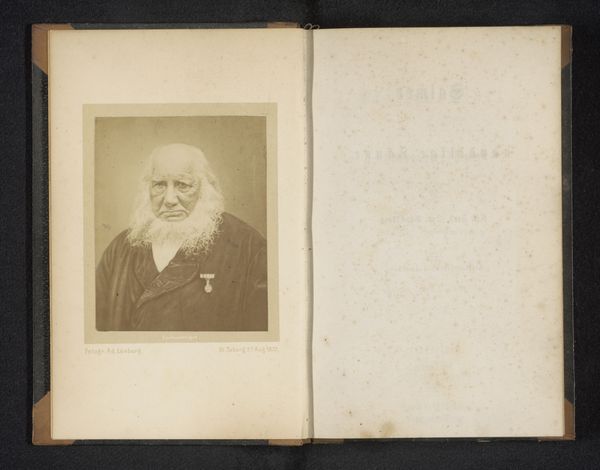
print, photography, gelatin-silver-print
#
portrait
# print
#
photography
#
gelatin-silver-print
Dimensions: height 115 mm, width 92 mm
Copyright: Rijks Museum: Open Domain
Editor: Here we have a photograph titled "Portret van Titus Salt," made before 1876 by Appleton & Co. It seems to be a gelatin silver print. The first thing that strikes me is how… substantial he looks, very serious, very Victorian. What do you see in this portrait? Curator: I see the weight of expectation. Consider the beard: it isn't just facial hair; it's a signifier, a carefully cultivated symbol of Victorian masculinity and status. Beards were often associated with wisdom, gravitas, and respectability, particularly in an era that was rapidly industrializing and questioning traditional hierarchies. Do you see any other clues about his cultural identity embedded in this image? Editor: Well, his suit, I guess, looks like what wealthy people wear. Also, his age. He looks very… established. But does all of that necessarily contribute to a kind of shared cultural understanding? Curator: Precisely. His attire and age communicate his belonging to a particular social and economic class. The very act of commissioning a portrait like this was itself a statement of his place in the world, contributing to a visual culture of aspiration and emulation. These images reinforce and solidify those power structures for others who might recognize the same signals. So what do you take away from understanding him as an icon in this way? Editor: I suppose it helps understand how even seemingly straightforward portraits can be incredibly rich with cultural information, reinforcing social structures. It's definitely more than just a picture of a guy with a beard. Curator: Indeed. Understanding visual symbols opens up layers of interpretation we might otherwise miss. And it demonstrates how potent imagery can be, especially when rooted in collective beliefs and historical narratives.
Comments
No comments
Be the first to comment and join the conversation on the ultimate creative platform.
